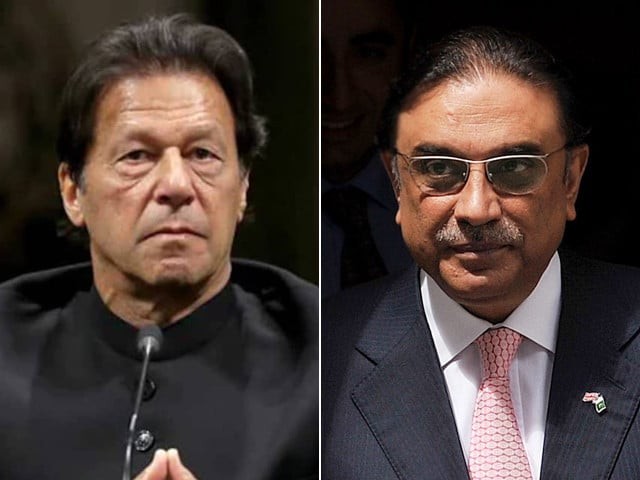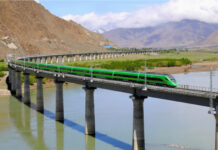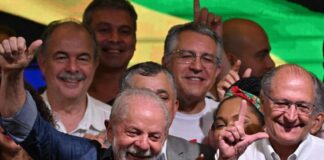Pakistan never fails to baffle the policy makers and analysts across the world. The exasperation is effectively expressed in words of Late US Secretary of State Madeleine Albright. In Dec 2012, she stated, “Pakistan continues to be an international migraine. It has poverty, extremism, issues of nuclear non-proliferation and a weak government. It needs to learn how to deal with extremism and the issue of nuclear non-proliferation. It is central to many problems.” How consequential this characterization is for the world, is a matter of conjecture, but this “migraine” certainly has severe consequences for the people of Pakistan, India, and the wider South Asia – in that order.
By Sanjiv Khanna
Pakistan’s descent from inception to emergence as a Praetorian State took less than a decade. The Pakistani state has lurched from crisis to crisis and is on the verge of default, due to a ballooning current account deficit. In early 2023, it was at the IMF (International Monetary Fund) for a bailout for the 23rd time. The guardian ‘Establishment’ has almost singlehandedly run the country with few hybrid-democratic interruptions, the latest being the subsequently discussed military’s dalliance with Imran Khan.
Tracing the source of Pakistan’s misfortunes will lead to the door steps of the Establishment. But Pakistani military is not the root cause, its dominance is a consequence of the path trodden by the Pakistan movement and the objectives thereof.
It would be instructive to draw a comparison between the conduct of militaries of India and Pakistan, since both came into being from the womb of the same British Army. It is extremely confounding to find that whereas in India the military never diverted towards any political ambitions, whereas in Pakistan the Army has never missed any opportunity to grab political power. Prevalence of military over the civilian rule began right from the inception of Pakistan. It is often said, “All countries have an Army, but in Pakistan, the Army has a country”; sadly, such lamentations are genuine. Investigation of the genesis of such a profound anomaly remains an imperative, at least for us in India.
Usually, scholars attribute this anomaly to the fact that majority of the top leadership of Pakistan – to name a few: Mohammad Ali Jinnah and Liaquat Ali Khan – had migrated from India, and did not have deep roots in what was Pakistani consciousness. Another argument used by the scholars is that the founding fathers of Pakistan did not live for long after the independence – Jinnah passed away in Sep 1948 and Liaqat Ali Khan was assassinated in 1951. On the contrary, they argue that on the Indian side there was continuity of leadership that fostered institution building such as functioning legislatures and independent judiciary, that allowed democracy to take deep roots and helped in establishing civilian supremacy. Such arguments only scratch the surface. It would be rewarding to visit the trajectory of India’s freedom movement that led to the freedom of India and formation of Pakistan.
Pakistan movement was propelled by the notion of the ‘Two Nation Theory’, whose edifice rested on the slogan, “Pakistan ka Matlab Kya, La Ilaha Ilallah Muhammadur Rasoolullah” (“What does Pakistan mean? There is No God except Allah and Muhammad is the messenger of Allah”). The premise behind the movement was that the Muslim minority, under a democratic setup, would be hugely overwhelmed by the majority Hindus, and hence will be prone to persecution by the Hindu Majority, and that this perceived fear could be addressed by carving out a separate nation of Pakistan from the Muslim majority provinces of India such as Punjab, Sindh, the Frontier and Bengal provinces of undivided India. The raison d’etre of partition being the feared inability to coexist with the “other religion”. The Muslim League leadership used this fear to unleash the baser instincts of the Muslims to enforce the partition.
It can be seen that the Pakistan Project was more the need of Indian Muslims in the Muslim minority states such as the United Province (UP), Bombay, Hyderabad etc. – Liaqat Ali Khan, the first PM of Pakistan, was from UP. It is interesting to note that there were not many takers for this Two-Nation Theory and the Muslim League in the Muslim majority provinces like Punjab had a unionist party government, while North West Frontier had a Congress government. It is ironical that the divisive gene of the Two Nation Theory passed onto the newly created state of Pakistan, and that would soon mature into another division leading to the birth of Bangladesh.
Constitutional Flop
In any modern state it is the Constitution that outlines the objectives of the state, establishes the relationship between the citizens, and between citizens and state. In case of Pakistan, it was religion that was the cause of its creation, and that completely disregarded the social, political, economic, and cultural realities. Urdu, the language of migrating people from India into Pakistan, was imposed on the country, none of whose original inhabitants used this language.
The British also quickly jumped onto the Pakistan bandwagon. In the ‘The Transfer of Power in India’, VP Menon writes : When in 1942 the His Majesty’s Government’s offer was announced, the opinion widely expressed was that the British were bent upon division of the country; that they wanted to create a Middle-Eastern sphere of influence, and in pursuance of that policy wished to bring about creation of a separate Pakistan.’’ [2] To achieve that aim, the Brits adroitly employed Islam to partition India which gave rise to the emergence of a weak state.
Eventually the Pakistan leadership got their country but had no vision for the state, as this is evident in the fact that they could settle their first working constitution quarter of a century later, in 1973. Pakistan Senate’s website aptly illustrates the protracted travails of constitution making: “After Independence, the first Constituent Assembly of Pakistan, elected in December 1945 in united India, was assigned the task of framing the Constitution of Pakistan. This Assembly passed the Objectives Resolution on 12th March, 1949 …. However, before it could accomplish the task of framing the constitution, the assembly was dissolved in October 1954. Thereafter, the Governor General convened the Second Constituent Assembly in May 1955, which framed and passed the first Constitution of Pakistan on 29th February, 1956. That Constitution was promulgated on 23rd March 1956, which provided for a parliamentary form of Government with a unicameral legislature.
On October 7, 1958, a Martial Law was promulgated and the Constitution was abrogated. The Military Government appointed a Constitution Commission in February, 1960, which framed the 1962 Constitution. That Constitution provided for a Presidential form of Government with a unicameral legislature. The 1962 Constitution was abrogated on 25th March, 1969. The Civil Government, which came to power in December 1971 pursuant to 1970 elections, gave the nation an interim Constitution in the year 1972. Meanwhile, the 1970 Assembly framed the 1973 Constitution which was passed on 12th April and promulgated on 14th August 1973. The 1973 Constitution provides for a parliamentary form of Government with a bicameral legislature, comprising of the National Assembly and the Senate.” It is interesting to note that Bangladesh, that came into being in 1971, got its constitution in 1972, before Pakistan.
The story of Pakistan’s creation can be summed up as: ‘all dressed up with nowhere to go’. Given the context, isn’t it an extremely tall order to expect Pakistan’s political leadership to establish its legitimacy? This aspect will be more discernible when we refer to the trajectory of India’s freedom movement.
The Indian freedom movement had, since its beginning, struggled for the economic interests, civil liberties and political rights of its people. The codification of these goals began with the Nehru Report of 1928, and continued with the resolution of the 1931 Karachi session. The Nehru Report was a response to constant harping by the British on the purported inability of Indians to formulate the constitutional reforms they wanted to have. The report can be seen as precursor to the contents of the Karachi resolution. As discussed in Prof. Bipan Chandra’s ´India’s Struggle of Independence’, the Congress defined what Swaraj would mean for the masses. It also declared that “in order to end the exploitation of the masses, political freedom must include real economic freedom for the starving millions.”
The Resolution guaranteed the basic civil rights of free speech, free press, free assembly and freedom of association; equality before the law irrespective of caste, creed or sex and neutrality of the state in regard to all religions; elections on the basis of universal adult franchise; free and compulsory education… relief from agricultural indebtedness; improved working conditions for workers including a living wage, limited hours of work …; the right to organize and form unions to workers and peasants; and state ownership or control of key industries, mines and means of transport.” Thus a consensus on the basic structure of the Constitution was already achieved two decades before we gave ourselves a Constitution in Nov 1950.
As opposed to Pakistan, the Indian leadership, armed with consensus over the goals of the newly formed state of India, confidently entered the dawn of Freedom, its legitimacy was never in doubt.
Rise of Pakistan Military
As is evident from preceding discussion, that it was pre-ordained for Pakistan that the institutions that were already established, trained, disciplined and endowed with resources would fill up the vacuum left by a political leadership which was devoid of any vision for the newly minted state. It was the military, supported by the bureaucracy, that filled up for the void.
In a seamless transition during the 1950s, the US had replaced UK as the security guarantor of the Middle East, thus controlling the flow of oil from the Middle East. Sensing the emerging geopolitics, Gen Ayub Khan out-manoeuvred the Foreign Office, and took lead in steering the relationship with the US to see Pakistan’s emergence as an US ally by 1954. Pakistan signed the ‘Mutual Defence Assistance Agreement’ with the United States, followed by joining the ‘South East Asian Treaty Organisation’ (SEATO). In the following year Pakistan joined the ‘Baghdad Pact’, a mutual defence grouping, with Britain, Turkey, Iran and Iraq, thus heralding Pakistan Army’s protracted relationship with US.
Pakistan’s military has steadfastly exploited the circumstances that arose from the run-up and finally the making of Pakistan. The Political leadership of Pakistan squarely failed to establish its legitimacy, and the void thus left was quickly filled by the Military that always had both the intellectual and kinetic resources to do so. In this pursuit the military was duly aided by the overgrown bureaucracy and the status-quoist landed gentry.
The result is there to see.
Electoral Pantomime in 2024
Pakistan has been amid the turmoil ushered in by the fall of the Imran Khan government in April 2022 that gave way to a ragtag coalition of opposition parties led by Shahbaz Sharif. This tenuous coalition, called PDM (Pakistan Democratic Movement) was comprehensively dwarfed by a massive economic crisis and the deteriorating security situation on its Western Borders. Upon completion of its term, Pakistan National Assembly was dissolved in August 2023, and the caretaker government under the leadership of Anwar-ul Kakkar was appointed to conduct general elections. Pakistan held its general election on 8th February 2024.
Effectively guided by the Establishment (read the military), the Election Commission of Pakistan de-recognised the Imran Khan-led PTI (Pakistan Tehreeke-e Insaf) and deprived it of its electoral symbol of a cricket bat, so its candidates had to contest as independents. Notwithstanding obstructions, the PTI supported independents emerged as the single largest group in the National Assembly, followed by PML-N (Pakistan Muslim League) of Nawaz Sharif and PPP (Pakistan People’s Party) of Asif Zardari. In order to be recognised as a political party, the PTI group joined the Sunni Itihad Council that would entitle them to the reserved seats that are distributed proportionally in the National Assembly. The PML-N and PPP formed a coalition government led by Shahbaz Sharif, while Khan’s group will sit in opposition.
Khan – Military Divorce
Pakistan has traversed a full circle since the previous elections, with the Sharifs returning as the new favourite of the Establishment, replacing Khan who was the chosen one in 2018. Khan enjoyed “on the same page” relationship with the then Army chief, Gen Bajwa, for the first three years of his term. The relationship started souring over the Khan’s preference to let Lt Gen Faiz Hameed continue as ISI (Inter Services Intelligence) chief, but Gen Bajwa overruled Khan, and instead appointed Lt Gen Naved Anjum in October 2021. There were also reports in Pakistan media that differences were also growing between the two over other governance issues such as the choice of Usman Buzdar as Chief Minister of the Province of Punjab.
Imran Khan, true to his character, did not miss any opportunity to articulate his strong inclination for an independent foreign policy – like aligning with Turkey-Malaysia at the expense of the Gulf monarchies. When questioned on offering bases to US to launch cross-border raids in Afghanistan, he famously said “Absolutely Not”. Such straightforwardness certainly would not have been music to the global powers that be, and would usually invite consequences.
The proverbial last straw on the camel’s back that engendered the fall of Khan’s regime was his visit to Russia, in Feb 2022, on the eve of the launch of the Ukraine offensive, sans any unequivocal opposition to this act of Russia. Khan had a foreboding of what was coming, so he went public with an alleged conversation between US State Department official Donald Lu, and Pakistan Ambassador to US Asad Majeed. The said conversation was contained in a coded communication, cipher, to Pakistan foreign ministry from its embassy in Washington. For this disclosure of cipher, Khan was to be charged later for the violation of the Official Secrets Act. It was claimed that US had warned Pakistan of consequences if Khan were to survive the forthcoming no-confidence motion in April 2022. It was a public knowledge that the Establishment played its role in galvanising support for the said motion.
The rest is history, Imran Khan’s government did not survive the no-confidence motion. Expectedly, Khan did not take a leaf from the playbook of his predecessor Nawaz Sharif, who when ousted in 2017, started with a bang with his “vote ko izzat do” campaign on GT Road from Islamabad but it soon ended in a whimper. Subsequently, Nawaz Sharif was convicted in corruption cases and spent some time in prison. But in Nov 2019 he was allowed to go to London on health grounds with the tacit support of the Establishment.
On the contrary, within weeks of his ouster in April 2022, instead of sulking quietly, Khan launched a frontal challenge to the Army, mobilising thousands of his supporters all across the length and width of the Country. He could instantaneously connect with the public by graphically explaining the way he was toppled. He did not mince words while accusing Gen Bajwa of involvement in the removal of his government under duress from US, and cleverly linked it to infringement on freedom of Pakistanis to demand “Haqeeqee Azaadi” (True Freedom). Equally importantly, he reiterated his commitment to fighting corruption of the dynasties of Sharifs and Bhuttos, and to the establishment of a ‘Falahi Riyasat’ (Welfare State). One might disagree, but his astute mixing of emotional and the real issues resonated with not only with the civilians but also with a cross-section of veterans. This presents a stark contrast with previous civil-military face-offs – when people distributed sweets after the Establishment sent civilian governments packing.
Strike of the Establishment
Khan’s protest rallies maintained momentum, until May 2023, when following Imran Khan’s arrest, PTI supporters went berserk and vandalized public properties and military installations including the residence of Corps Commander Lahore. This provided the Army a long awaited and unquestionable pretext to unleash its oppressive powers to stop the Khan juggernaut. Thousands of supporters were arrested, trials in military courts initiated, and PTI leaders were coerced to quit the party or face incarceration. Khan was again arrested in November 2023, and remained in Adiala jail, faceing around 200 charges. He has already been convicted on three counts of corruption, illegal marriage and violation of the Official Secrets Act on the cipher case amounting to thirty years of imprisonment. As if all of this was not enough to keep PTI out of reckoning, the Pakistan Election Commission, during the run up to the elections, froze the election symbol of the cricket bat. This effectively meant that the PTI candidates could contest only as Independents.
It is evident that the Establishment meticulously laid out a pitch that was heavily loaded in favour of the Sharifs, and the rout of PTI’s independents was a foregone conclusion. However, nasty surprise was in store for the Establishment. Despite very powerful intelligence agencies and almost octopus like grip on the Pakistani society, the Establishment completely underestimated the will and endurance of the public to turn up in large numbers and vote for PTI’s independents candidates.
As the evening of 08th Feb grew, the support for Khan started manifesting within the first few hours of counting of votes. PTI candidates were racing past their rivals in the majority of seats. Alarm bells started ringing, and suddenly the counting of votes was stopped. The process resumed the next morning with complete reversal of trends – winners became losers. Not only the PTI, but other contestants have also alleged of the large-scale rigging. The results will further aggravate the already fragile politico-economic situation, and the incoming government, with even more diminished mandate, will be hardly capable of prevent the backslide of constitutional propriety.
Conclusion
A successful transition of Pakistan from a security forces dominated state to a normal civilian led welfare state will follow only after a protracted struggle by Pakistani politicians to retrieve the ground yielded to the military at the very inception of the country. It is quite evident that the election results, despite all the machinations of the Military, are a firm rejection of the powerful Generals. People of Pakistan have withstood sustained oppression, and have bravely turned out to give their verdict. Now it is the turn of the civilian leaders to rise to the occasion,
Keeping schadenfreude under leash, we in India can easily realize that in its present form, a hostile Pakistan is an incessant drain on Indian blood and resources. It also obstructs us from striking a balance between our continental and maritime security imperatives and obscures our future visions. Nothing is expected to change in the immediate future and the instability will continue. Even then, the recent turn of events in Pakistan could be a baby step in its faltering march towards democracy. Amidst the gloom one can see a silver lining in the expression of the editorial of Financial Times: “With this stunning result, a long term reckoning over how Pakistan ought to be governed has begun.”
This article first appeared in www.vifindia.org and it belongs to them.








